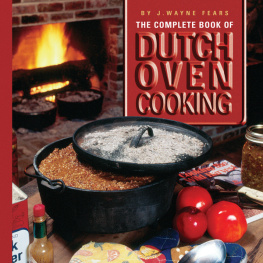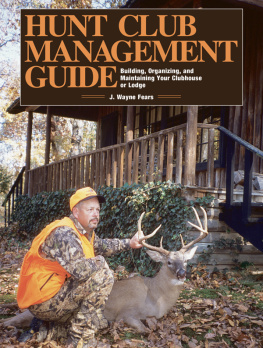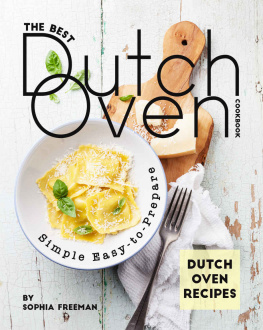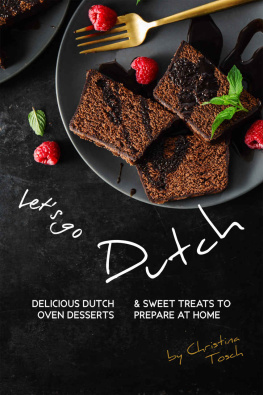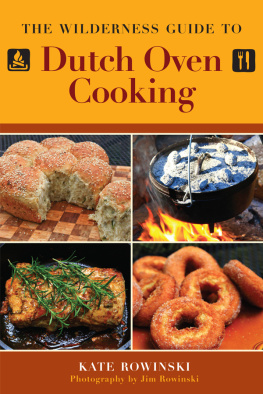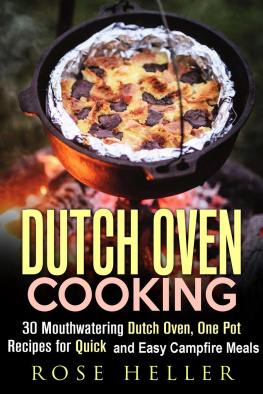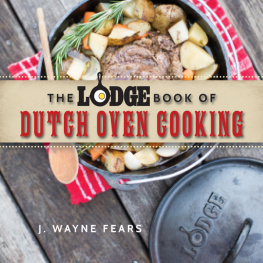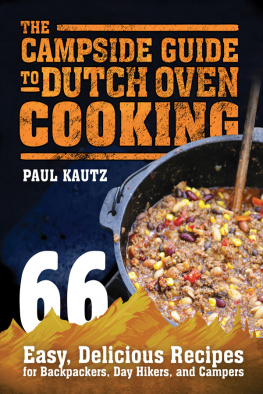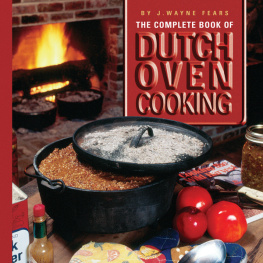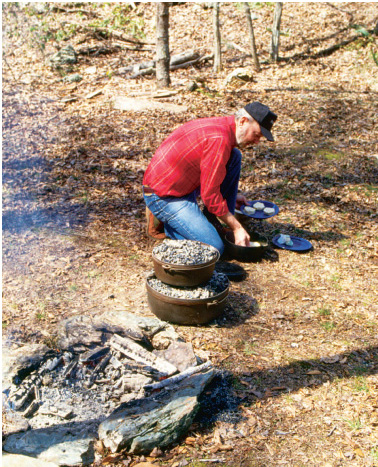Copyright 2010 by J. Wayne Fears
All Rights Reserved. No part of this book may be reproduced in any manner without the express written consent of the publisher, except in the case of brief excerpts in critical reviews or articles. All inquiries should be addressed to Skyhorse Publishing, 555 Eighth Avenue, Suite 903, New York, NY 10018.
Skyhorse Publishing books may be purchased in bulk at special discounts for sales promotion, corporate gifts, fund-raising, or educational purposes. Special editions can also be created to specifications. For details, contact the Special Sales Department, Skyhorse Publishing, 555 Eighth Avenue, Suite 903, New York, NY 10018 or info@skyhorsepublishing.com.
www.skyhorsepublishing.com
10 9 8 7 6 5 4 3 2 1
Library of Congress Cataloging-in-Publication Data is available on file.
ISBN: 978-1-60239-963-1
Printed in the United States of America
PHOTOGRAPHY CREDITS:
Barry Fikes: Cover photo
Vann Cleveland; 6, 72, 86, 138
Barry Fikes; 20, 22, 32, 33, 35(top), 50, 51, 52, 53, 54, 55, 56(top), 58, 76, 87
Alex Bowers; 95, 96, 99,100,104,107, 108, 111, 112, 115, 116, 119, 120,125, 126, 129, 133, 134, 137
CONTENTS
To Sofee
She brings sunshine to every day, every situation.
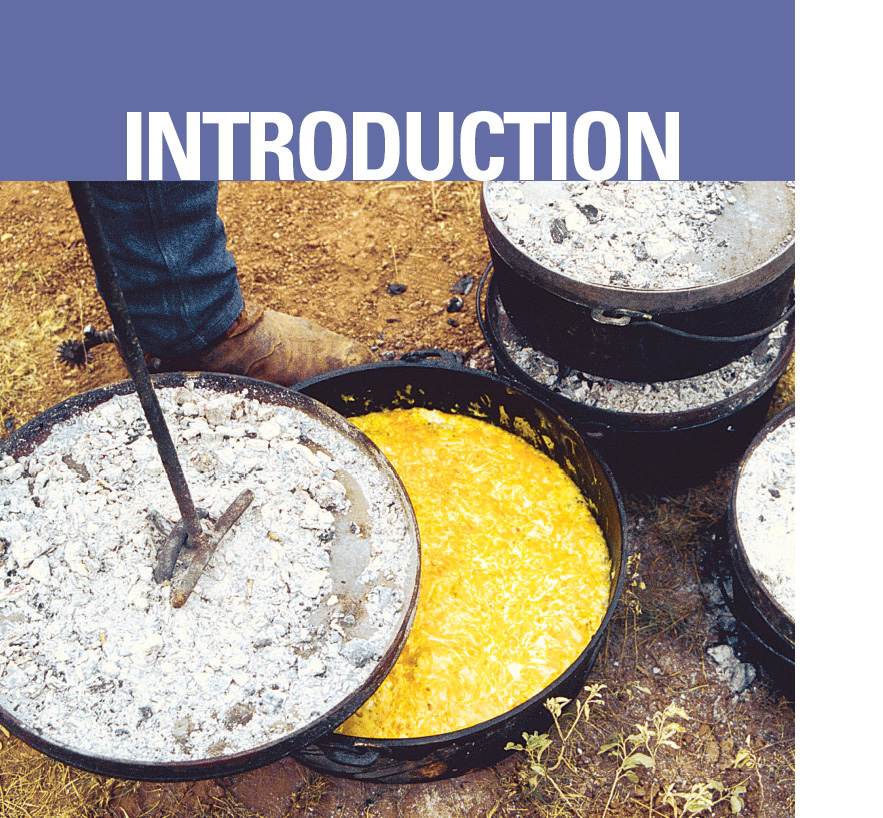
I f you saw a TV commercial that advertised one cooking pot that would bake bread, steam vegetables, boil shrimp, fry eggs, stew wild game, and broil meats, chances are you might be interested. But what if the commercial went on to say that this non-stick pot could be used to cook a meal on your home stove, in your den fireplace, on the patio, in a campfire at a state park, or on family camping trips, plus it was guaranteed to last several generations of use? Your interest would probably peak and you would want to know a lot more about this magic pot.
The magic cook pot that can do it all is the Dutch oven.
THIS MAGIC POT IS THE DUTCH OVEN
There are a lot of different designs of cooking pots that are called Dutch ovens. Some are modern aluminum pots designed to be used with modern stoves. Others are cast iron pots with legs that have been made famous by cooks on African safaris. (The real name for these pots is potjie and it dates back to the 1500s.) Yet others are cast iron pots with rounded bottoms that are designed to be used hanging over an open fire. And there are flat-bottomed cast iron pots designed to sit on a stove. These are often called kitchen Dutch ovens. I have used them all with satisfaction, while debating against their being called Dutch ovens.
Most outdoor cooks are in agreement that the real Dutch oven is made from heavy cast iron, or aluminum, with a flat bottom sitting on three short legs protruding about two inches. It has a strong wire bail. The lid is made of the same heavy cast iron and has a small loop handle in the center. The rim of the lid is flanged so that hot coals will stay on the lid while cooking. Many people call these ovens camp Dutch ovens to distinguish them from other so-called Dutch ovens. For the purpose of this book this is the Dutch oven we will be talking about.
J. Wayne Fears has counted on the Dutch oven to produce good meals throughout his outdoor career. It has never let him down.
The Dutch oven has been piquing cooks' interest for many centuries. It has been used in this country since the first settlers began exploring the Atlantic seaboard. Today, 21st-century cooks are finding the old-fashioned Dutch oven just as much fun and valuable as did the colonial cooks who depended upon the pots to cook all their meals. While we don't have to stoop over a fireplace full of hot coals to cook a meal, cooks around the world are discovering the joy and good taste that come with cooking in a Dutch oven. Whether they are used for cooking for a party on the patio, cooking on a camping trip, or cooking in an emergency when the utilities are not working, the Dutch oven produces great-tasting food with a small amount of effort, and its use is a fun family activity.
MY LIFE WITH DUTCH OVENS
My earliest recollection of the Dutch oven was as a small child growing up in the mountains of Alabama. My dad was a trapper and, occasionally, would take me on his trapping expeditions. He had the simplest of camping gear but his camps were comfortable and the meals always good and plentiful. His cook kit was an old 10-inch cast iron Dutch oven. The night before we would leave to run his traps, I would lie awake in my bed too excited to sleep. I would visualize the old Dutch oven steaming on the campfire, full of stew. I could smell the hoe-cake he would be cooking on the inverted oven lid sitting on a small bed of coals. Morning would not come quick enough. He was a master at cooking in the black pot and today, more than 50 years later, I use the same Dutch oven to cook for friends and family on my patio. Every time I cook in the pot I think about those long-ago adventures with my dad, and the many meals we shared that were prepared in his Dutch oven.
BELOW: A lot of pots, as shown, are called Dutch ovens but most Dutch oven cooks only consider the one on the left a real Dutch oven.
At the age of eleven I joined the Boy Scouts and was surprised that Dutch oven cooking was a part of the skill training required if you were to be an active member of Troop 70. By the time I earned the rank of Eagle, I could cook up a pretty fair meal for a patrol-size group of scouts using a couple of Dutch ovens. It was during this period I was introduced to aluminum Dutch ovens and learned how to use them in conjunction with the cast iron ovens.
As I reached adulthood I was to find the Dutch oven to continue to be a part of my life. The cooking skills I learned in Troop 70 would come in handy countless times in the future. A career that combined wildlife management with outdoor writing found me working in remote camps throughout the world. From the frozen Arctic to southern Argentina I would work out of camps that depended on the Dutch oven to provide hungry outdoorsmen with good-tasting, wholesome meals. For several years I worked as an outfitter and guide with backcountry operations in Alaska, British Columbia, Colorado, Georgia, and Alabama. To feed my guests, I depended upon various sizes of cast iron Dutch ovens and was a constant student of Dutch oven cooking.
DUTCH OVENS AT HOME
During the off-seasons I would bring my Dutch ovens home and store them by the fireplace in the family room of my home. Here they became the center of attention as visitors would ask about the antiques and whether I really used them. This gave me the idea to use the ovens to cook meals for dinner parties. Sometimes I would cook in the fireplace, as did our forefathers; on other occasions I would use charcoal briquets and cook out on the patio. These cooking sessions were always the highlight of the party and led to many of my friends becoming Dutch oven chefs. Also, it led to many Dutch ovens being sold for interior decoration rather than cooking purposes.
Today, Dutch oven cooking has become a favorite pastime for thousands of people from all walks of life. The Internet offers lots of Dutch oven cooking advice and recipes, some good, some bad. Dutch oven cook-offs have become popular gatherings for Dutch oven fans and tourists alike. Dutch oven enthusiasts have formed their own organization, the International Dutch Oven Society, to be a clearinghouse for Dutch oven information and to foster interest in Dutch oven cooking. For many people, Dutch oven cooking has become part of their recreational pursuit, for othersguides, cowboys, outfitters, back-to-the-landers, and people living in remote placesit is simply the way they cook hearty, wholesome meals daily.

